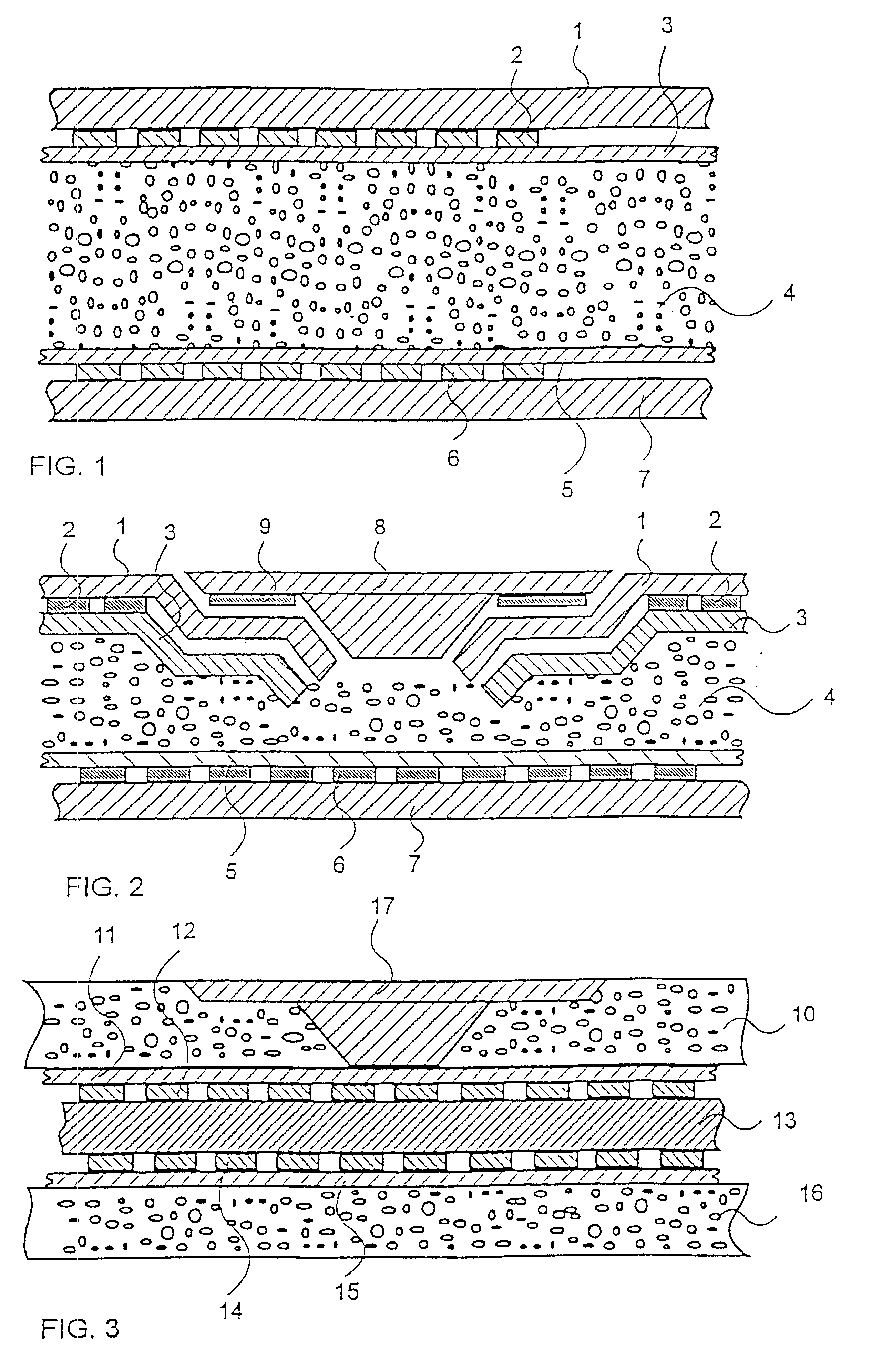Injection-moulded card with decorative layer
- Summary
- Abstract
- Description
- Claims
- Application Information
AI Technical Summary
Benefits of technology
Problems solved by technology
Method used
Image
Examples
Embodiment Construction
FIG. 1 shows an injection-molded card consisting of injection-molded card body 4 surrounded on both sides by labels 1, 2, 3 and 5, 6, 7, respectively. The labels consist of transparent foil 1, 7, decoration 2, 6 preferably applied to said foil by printing technology, and protective layer 3, 5.
During production of such a card the labels are first produced in the known fashion. For this purpose the decorative layer is applied to the transparent foil in an external production step. For protection of the decorative layer the latter is subsequently coated with a protective layer. Said protective layer is to protect the decorative layer from excessive pressures or excessive thermal or mechanical load in the later injection molding process so as to avoid any restriction in the use of decorative inks, for example to thermostable inks, or in the use of the injection molding material to reaction-injection-moldable plastics.
The printed labels are preferably punched out of large sheets. The thu...
PUM
| Property | Measurement | Unit |
|---|---|---|
| Adhesion strength | aaaaa | aaaaa |
| Transparency | aaaaa | aaaaa |
Abstract
Description
Claims
Application Information
 Login to View More
Login to View More - R&D
- Intellectual Property
- Life Sciences
- Materials
- Tech Scout
- Unparalleled Data Quality
- Higher Quality Content
- 60% Fewer Hallucinations
Browse by: Latest US Patents, China's latest patents, Technical Efficacy Thesaurus, Application Domain, Technology Topic, Popular Technical Reports.
© 2025 PatSnap. All rights reserved.Legal|Privacy policy|Modern Slavery Act Transparency Statement|Sitemap|About US| Contact US: help@patsnap.com


